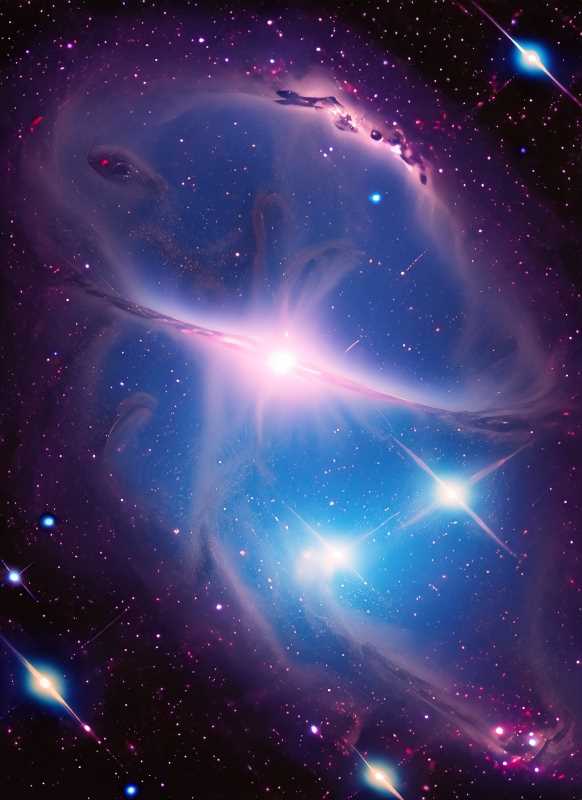How the Universe Brewed Elements in Four Minutes
The first four minutes after the Big Bang were not just a prelude but a defining chapter in the universe's genesis. This crucial period, known as the third pillar of the Big Bang Theory, saw the formation of light elements—hydrogen, helium, deuterium, and trace amounts of lithium.

The cosmos serves as a grand tableau, a high-stakes arena where the laws of physics stage their most enthralling dramas. One such momentous episode unfolded within the initial four minutes following the inception of our universe, which is often referred to as the Big Bang. This infinitesimal sliver of cosmic history harbors the third pillar that substantiates the Big Bang Theory: the formation of light elements.
Let's turn the cosmic clock back to the nascent stages of the universe, when temperatures were an inconceivable ten billion degrees Kelvin. In this realm of extremities, the universe was not only expanding, but was also a cauldron for nuclear reactions. Neutrons and protons oscillated between states of assembly and disassembly, generating deuterium atoms, but were unable to advance further into forming heavier elements due to these volatile conditions.
As the universe cooled, deuterium, an isotope of hydrogen with one neutron and one proton, reached a stable state. This stability facilitated subsequent nuclear reactions between deuterium and protons, giving rise to helium-3, an isotope of helium containing two protons and one neutron. This process subsequently reached its zenith with the formation of helium-4—two neutrons and two protons bound in atomic unity.
Interestingly, once helium-4 came into existence, the universe imposed its limitations. With temperatures plummeting to a still-unimaginable 800 million degrees Kelvin in just four minutes post-expansion, nuclear activities essentially froze. This monumental decline in temperature rendered the universe incapable of synthesizing heavier elements, thereby establishing a cosmic chemical baseline primarily constituted of hydrogen, helium, and trace amounts of deuterium and lithium.

The Parameters
The ratio between hydrogen and helium that came to define galaxies was not a mere cosmic whim; it was dictated by two decisive parameters— the number of neutrino families and the baryonic density of the Universe at that pivotal moment. A higher density accelerated the timing of these nuclear reactions because it increased the number of neutrons per unit mass, which is integral to helium production. Similarly, a higher number of neutrino families contributed to an increased density, thereby escalating helium production.
Galaxies eventually coalesced with an elemental distribution of approximately 23% helium and 77% hydrogen. Stars, ranging in mass from a tenth to a hundred times that of our Sun, emerged from these primordial galaxies. The destiny of each star—its life cycle, fate, and whether it exists in solitude or in a binary system—subsequently determined how it would augment the interstellar medium with heavier elements.
The Universe, in a mere four minutes, indelibly stamped its elemental constitution. This brief temporal window gave us not only the atomic components that would later build galaxies and stars but also a formidable validation for one of the most audacious theories in cosmology: the Big Bang.
Moreover, the relative abundance of hydrogen and helium has influenced the evolution of galaxies and stars, the very furnaces that forge heavier elements and redistribute them back into the cosmos, in a poetic cycle of cosmic creation and recreation. Indeed, these first four minutes serve as a humbling reminder of the complexities and intricacies that underlie our ever-expanding universe—a universe whose most transformative moments are often sequestered in the blink of a cosmic eye.
In-Text Citation: ‘Evolución de La Composición Química Del Universo’. Revista de La Universidad de México, https://www.revistadelauniversidad.mx/articles/84f43983-4ac5-4e19-90ea-ecfafd73f26e/evolucion-de-la-composicion-quimica-del-universo. Accessed 14 Sept. 2023.




